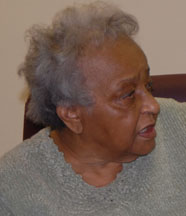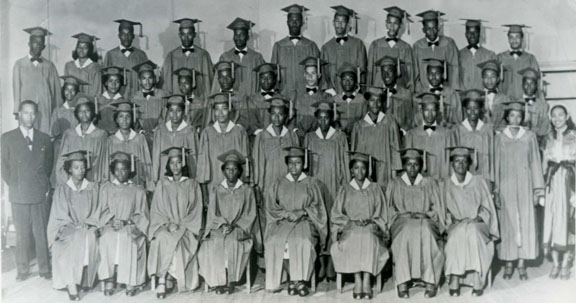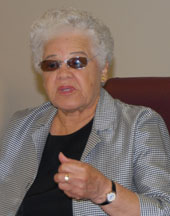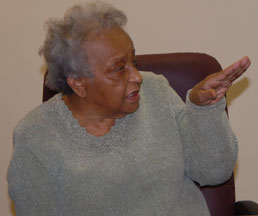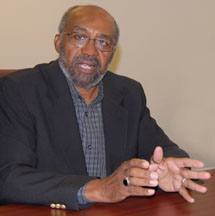

Building Community and the School Assembly |
|||||||||||||||||||
|
“I looked forward to every Friday. The assemblies were an occasion when we all came together. It was so exciting and we felt like one large family. The principal spoke and the teachers were there, and the students were all so talented.” |
||||||||||||||||||
Magnolia Avenue High School provides the opportunity to underscore the significance of the end-of-the-week school assembly as a profound educational experience and as an opportunity for educators to instill the concept of community and to develop a sense of democracy. Other member schools, notably Booker T. Washington High School in Rocky Mount, organized such dramatization, and the motives were far removed from the pedantic 1950 school assemblies commonplace in traditional settings. In contrast, the intent of Magnolia Avenue High School gatherings were far from the dissemination of knowledge; the assembly programs sought to strengthen the concept of "democracy as a way of life" and to embrace many of the basic tenets of progressive education. from the Secondary School Study Catalog, circa 1940 "Assembly programs are presented cooperatively by the classes in both the elementary and high school departments. One teacher directs a committee of pupils in the organization and supervision of these programs after the teachers and their classes have prepared the presentation. These programs have been both informative and entertaining. |
|||||||||||||||||||
|
“All of the teachers would come to the Friday assemblies where Professor Bowman was the master of ceremonies. This wasn’t just an event for the students. It was a grand time for the teachers where they showed how proud they were of us. We were a true community.” Jeanette Jordan |
||||||||||||||||||
|
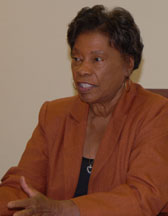 Allene Gayles |
||||||||||||||||||
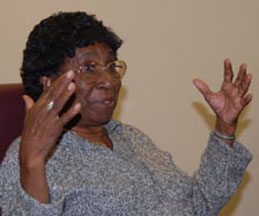 Louise Murray Stewart |
|
||||||||||||||||||
|
|
||||||||||||||||||
from Secondary School Study documents: “Definite changes have taken place in the relationship between teachers and pupils, the trend being in the direction of democratic leadership on the part of teachers. Such leadership has resulted in more satisfying experiences for more pupils. In the subject areas teachers are becoming more skillful in exploring problem situations and areas of interest with pupils, rather than for pupils. The programs of Magnolia Avenue High School and D. W. Davis High School illustrate this type of exploration.” |
|||||||||||||||||||
|
“Home room was a special time for us to come together. This was an important part of the structure of the day and was taken very seriously. We were able to discuss with an adult and with each other general issues around education and about living in modern times. While home room may seem trite or commonplace today, the period was an integral part of our education.” |
||||||||||||||||||

an institutional member of the International Coalition of Sites of Conscience
Museumofed@gmail.com

